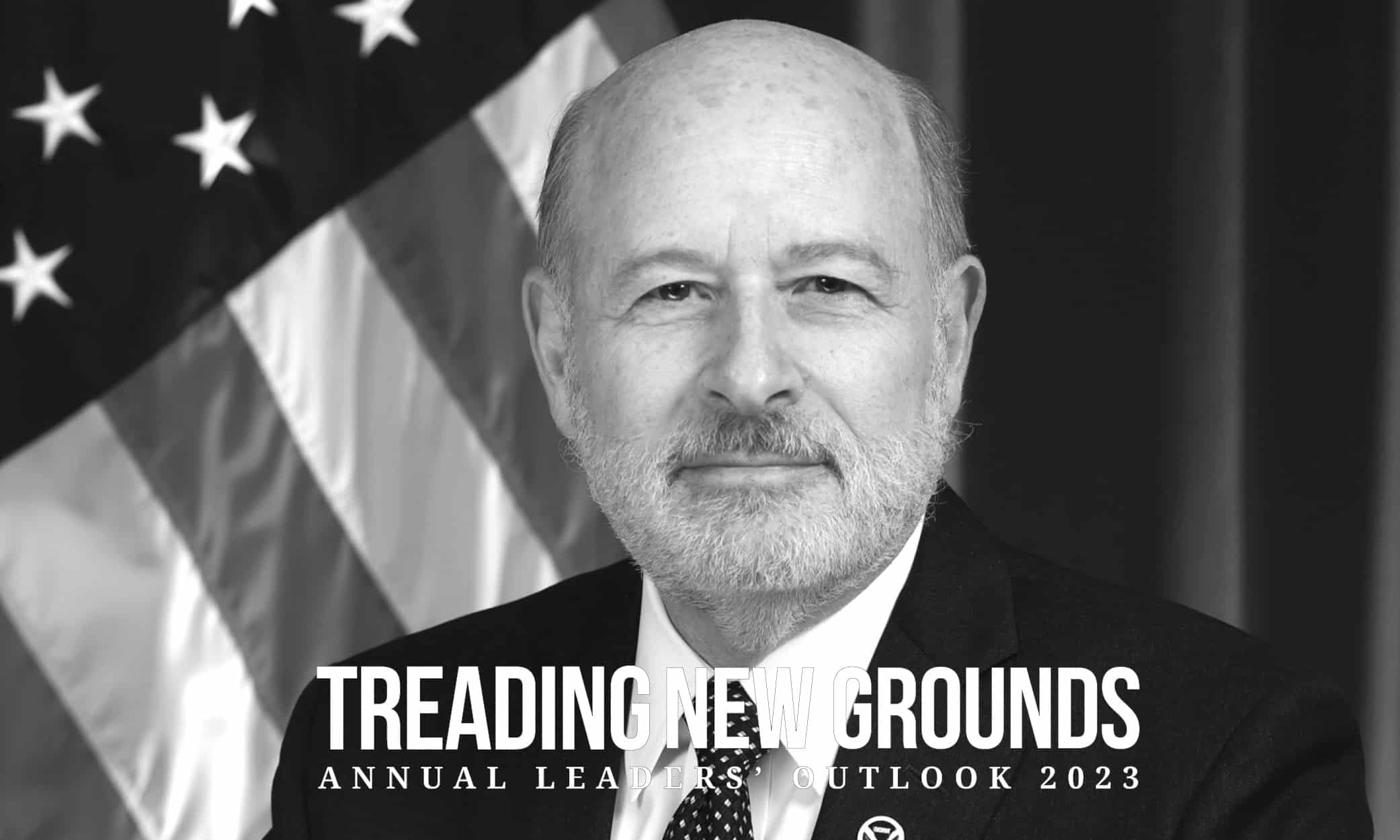The National Oceanic and Atmospheric Administration (NOAA) envisions healthy ecosystems, communities and economies that are resilient in the face of change to emerge and strengthen American competitiveness in the 21st century.
Richard W. Spinrad, Ph.D. Under Secretary of Commerce for Oceans and Atmosphere & NOAA Administrator shared his perspectives on NOAA’s strategies, innovations and initiatives in an exclusive conversation with Geospatial World.
We understand that NOAA’s vision of the future includes the development of resilient ecosystems. In this context, what initiatives are you undertaking to foster the resilient communities and economies in the short and long term?
I am a confirmed climate optimist. I believe through the development of climate data, climate services and climate products, we can position the nation to actually understand how climate is going to impact our coastal communities, our ability to grow food and have food security, our understanding of what we need to do to adapt to changes in weather patterns and adapt accordingly on how we use energy insight. So we are developing concepts around a Climate-Ready Nation.
These innovative and valuable climate data, products and services, will provide rich insights to shape effective policies which would feed decisions at a local level, personal level and corporate level.
The New Blue Economy is a knowledge-based economy, looking to the sea not just for extraction of material goods, but for data and information to address societal challenges and inspire their solutions.
NOAA’s Strategic Plan 2022- 2026 includes a strong priority to build a ‘Climate Ready Nation’ by establishing NOAA as the primary federal authoritative provider of climate information and services in the whole-of-government response to tackle the ongoing climate crisis.
As climate risks continue to grow, NOAA is addressing these challenges by providing essential, critical weather, water and climate information and data to members of the community and key decision-makers so that they can take appropriate actions to reduce the impacts of climate change.
Climate data is required by relevant private and public sector decision-makers to increase resilience to the more frequent weather extremes and its overall community impacts. What are your thoughts on how translating climate data helps in effective understanding of related community impacts?
NOAA has been developing climate products and services which contribute to decision-making and to understanding natural environment that affect a community’s everyday life. Recently these efforts have been bolstered by federal funding from the Bipartisan Infrastructure Law and the Inflation Reduction Act, which have provided almost USD 6 billion to NOAA, most of which is being used for climate adaptation and resilience strategies.
For example NOAA’s– ‘Sea Level Rise viewer’ allows local communities to get access to highly accurate information about what they are going to see in terms of loss of land due to sea level rise, where it’s going to be more severe than other places and by how much.

These kinds of data are being used to help communities become more resilient, with a particular emphasis on natural infrastructure. In fact, we have just announced USD 295 million in the present fiscal year for natural infrastructure investments to increase resilience and buffer against climate change and extreme events.
Our goal is for our products and services to be used to understand what the climate impacts are going to be. Through impact-based decision support we are trying to understand the nature and severity of impacts and then help affected communities, especially vulnerable communities, to address them.
The significance of understanding the extent of the actual impact felt by communities can be a very helpful tool to determine which climate data and services to prioritize on when initiating a program. Having the right information is how we mitigate climate change challenges.
Climate equity ensures the just distribution of the benefits of climate protection efforts for everyone. How important is it to recognize this aspect in related initiatives and decisions?
Equity is central to all of our efforts, especially since traditionally underserved communities have often been left behind. Our goal is to make sure they have access to all of our climate products and services.
As an example, the web portal Heat.gov serves as a primary source of heat and health information for the nation to reduce the health, economic and infrastructural impacts of extreme heat. Our goal is for community-based decision-makers, along with anyone in the community, to have the information.
Language is another important factor when talking about equity. Many of NOAA’s products like weather emergency warnings are already being translated into Spanish. We hope to do even more in the future.
The model of centralized, government-directed human space activity born in the 1960s has, over the last two decades, made way for a new model, in which public initiatives in space increasingly share the stage with private entities. What is your view on the strategic significance of the ‘commercialization of space’ sector?
I think the investment in commercial remote sensing, is very exciting. That said, we need to make sure that as a government entity charged with regulatory oversight that, we are doing our due diligence with respect to commercial remote sensing.
Space situational awareness and space traffic management are key components of NOAA’s responsibilities through our Office of Space Commerce (OSC). This team also works with industry on policies that allow use of commercial data in a very effective manner and allow the commercial data providers to grow their business and build out their business model. So, I think you’re going to see an increased volume of activity on the commercial side. The other thing is with miniaturization, we are starting to see some remarkable capabilities in the private sector.
All of the information NOAA acquires with their products and services are being used to understand what the climate impacts are going to be
In NOAA we are constructing billion-dollar satellites which are in the constellation of lower earth orbit and geostationary. These are both primarily satellites as well as space weather satellites. We are going to build those out over the years to come. We launched two satellites GOES 18 and the Joint Polar Satellite System -2 (JPSS-2) in 2022.
At the same time we are looking at the commercial sector for some of the very small microsats, nanosats that are going to be providing a lot of capabilities. So I think you are going to see a burgeoning private sector.
As global concerns of environmental degradation draw attention of concerned stakeholders, the ocean is being increasingly viewed as the Earth’s next frontier waiting to be fully explored and used. NOAA is actively working in the marine realm. What are your views on the growing impact of the marine world on the human world in the future and how is it helping shape policy making and action?
The Biden Administration’s “America the Beautiful” initiative has set a goal to conserve and restore 30 percent of the nation’s lands and waters by 2030. At NOAA, we have a very strong ocean conservation and stewardship component and we have an active involvement in the country’s Marine Protected Areas.
An important area of attention in this arena is the Office of National Marine Sanctuaries, which serves as the trustee for a network of underwater parks encompassing more than 620,000 square miles of marine and Great Lakes Waters.
There is also the National Estuarine Research Reserve System which is a network of 30 coastal sites designated to protect and study estuarine systems.
An important initiative formulated in 2022 is the signing of a Memorandum of Understanding (MOU) between Nippon Foundation- General Bathymetric Chart of the Oceans (GEBCO) Seabed 2030 and NOAA at the UN Ocean Conference 2022 in Lisbon which will greatly expand the understanding of the world’s ocean by initiating mapping of global ocean waters.
The ocean covers more than 70 percent of the planet. With the development of new tools and technologies for mapping and measuring its floor, we have a better capacity to understand its physical structure, and the life it supports, and therefore better understand our full planet. That knowledge can help us make better, more sustainable decisions — locally, nationally, and globally.
Can you share more about the concept of ‘New Blue Economy’ you have written about extensively?
The New Blue Economy is a knowledge-based economy, looking to the sea not just for extraction of material goods, but for data and information to address societal challenges and ultimately to inspire solutions. There is an opportunity for economic development, but it must be balanced with environmental stewardship.
Let me offer an analogy by using the commercial weather industry. Several decades ago, some meteorologists thought they could take the basic products that the National Weather Service produces and then add value to them for targeted markets. The result is a robust commercial ‘value added’ weather products industry worth several billion dollars.
I am convinced that the same type of approach to ocean data, in the context of this New Blue Economy, would be orders of magnitude greater in economic value.
New Blue Economy founded on the improved collection, analysis, and dissemination of ocean and coastal-derived data and information, can support economic growth and address societal challenges while protecting ocean health and ensuring social equity.
ALSO READ: EU Space Strategy for Security and Defense










